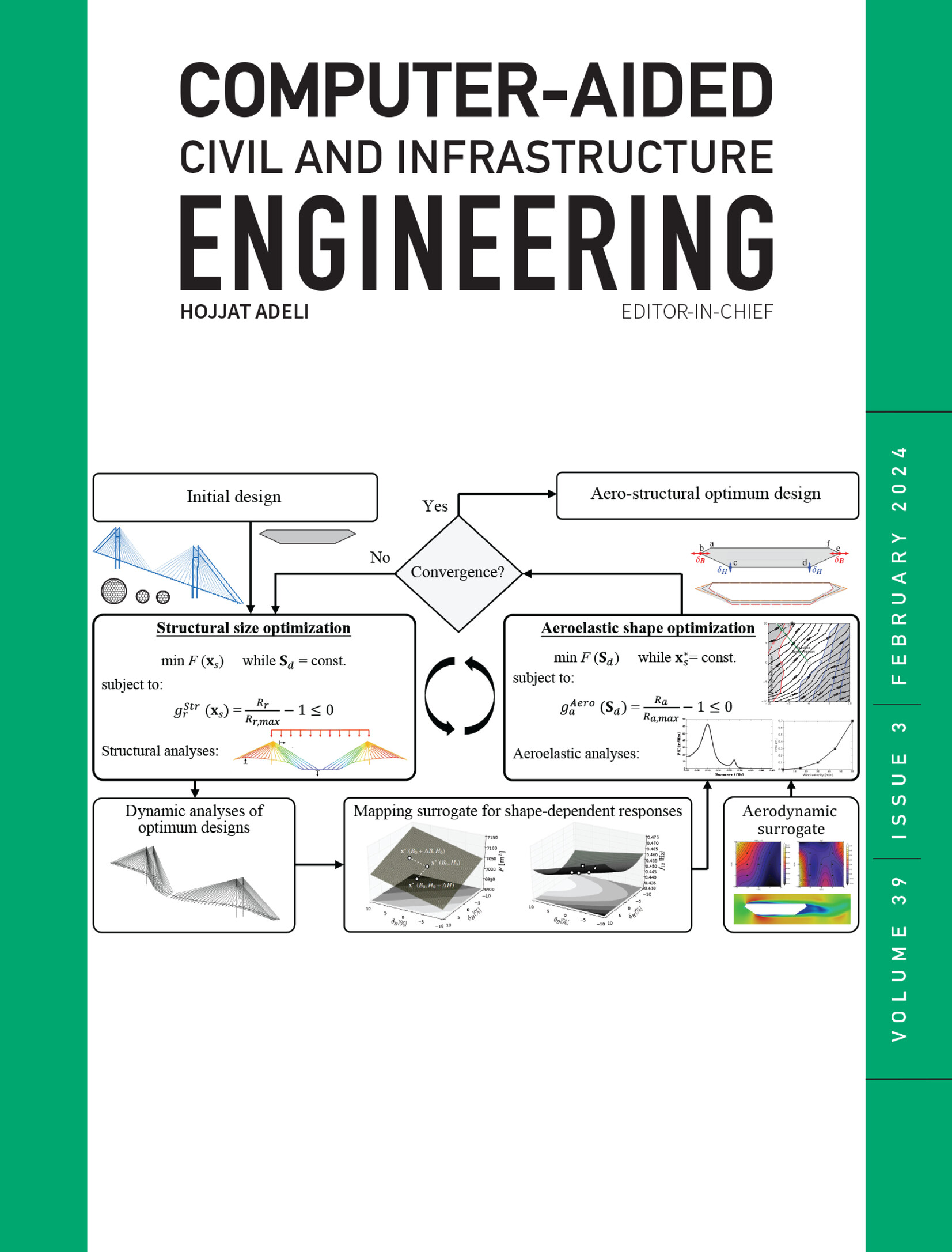Uncertainty quantification in Bayesian physics-informed deep learning-based traffic state prediction
IF 9.1
1区 工程技术
Q1 COMPUTER SCIENCE, INTERDISCIPLINARY APPLICATIONS
引用次数: 0
Abstract
Accurate and reliable traffic state prediction (TSP) is an essential task for intelligent transportation systems. However, achieving this goal is challenging due to the high-dimensional and coupled nature of traffic feature evolution patterns, which are deeply recessive and make it difficult to effectively characterize and model TSP using purely data-driven methods. Furthermore, a significant limitation of existing TSP methods is their inability to estimate data and model uncertainty, which is crucial for understanding inherent data variations and model limitations. To address these challenges, this study proposes a novel TSP model that combines the diffusion convolutional recurrent neural network (DCRNN) with physical prior knowledge within a Bayesian framework. Specifically, DCRNN captures the spatiotemporal correlation among various sensors. Furthermore, this approach leverages Monte Carlo dropout and heteroskedasticity modeling to quantify epistemic and aleatoric uncertainties. The model's efficacy is evaluated using the Xuancheng China urban dataset and the PeMS04 US highway dataset. Empirical results show that the proposed method outperforms state-of-the-art methods in both prediction accuracy and uncertainty quantification. These findings highlight the advantages of a data-model hybrid-driven approach to achieve accurate and reliable TSP. This study effectively quantifies and mitigates both aleatoric and epistemic uncertainties, holding significant implications for the control and management of real traffic flow.基于贝叶斯物理的深度学习交通状态预测中的不确定性量化
准确可靠的交通状态预测(TSP)是智能交通系统的一项重要任务。然而,实现这一目标是具有挑战性的,因为交通特征演化模式具有高维和耦合的性质,这些特征是深度隐性的,很难使用纯粹的数据驱动方法有效地表征和建模TSP。此外,现有TSP方法的一个重要局限性是它们无法估计数据和模型的不确定性,这对于理解固有的数据变化和模型局限性至关重要。为了解决这些挑战,本研究提出了一种新的TSP模型,该模型将扩散卷积递归神经网络(DCRNN)与贝叶斯框架内的物理先验知识相结合。具体来说,DCRNN捕获了不同传感器之间的时空相关性。此外,该方法利用蒙特卡罗dropout和异方差模型来量化认知和任意不确定性。使用中国宣城城市数据集和美国PeMS04公路数据集对模型的有效性进行了评估。实证结果表明,该方法在预测精度和不确定度量化方面都优于现有方法。这些发现突出了数据模型混合驱动方法在实现准确可靠的TSP方面的优势。该研究有效地量化和减轻了任意和认知的不确定性,对实际交通流的控制和管理具有重要意义。
本文章由计算机程序翻译,如有差异,请以英文原文为准。
求助全文
约1分钟内获得全文
求助全文
来源期刊
CiteScore
17.60
自引率
19.80%
发文量
146
审稿时长
1 months
期刊介绍:
Computer-Aided Civil and Infrastructure Engineering stands as a scholarly, peer-reviewed archival journal, serving as a vital link between advancements in computer technology and civil and infrastructure engineering. The journal serves as a distinctive platform for the publication of original articles, spotlighting novel computational techniques and inventive applications of computers. Specifically, it concentrates on recent progress in computer and information technologies, fostering the development and application of emerging computing paradigms.
Encompassing a broad scope, the journal addresses bridge, construction, environmental, highway, geotechnical, structural, transportation, and water resources engineering. It extends its reach to the management of infrastructure systems, covering domains such as highways, bridges, pavements, airports, and utilities. The journal delves into areas like artificial intelligence, cognitive modeling, concurrent engineering, database management, distributed computing, evolutionary computing, fuzzy logic, genetic algorithms, geometric modeling, internet-based technologies, knowledge discovery and engineering, machine learning, mobile computing, multimedia technologies, networking, neural network computing, optimization and search, parallel processing, robotics, smart structures, software engineering, virtual reality, and visualization techniques.

 求助内容:
求助内容: 应助结果提醒方式:
应助结果提醒方式:


